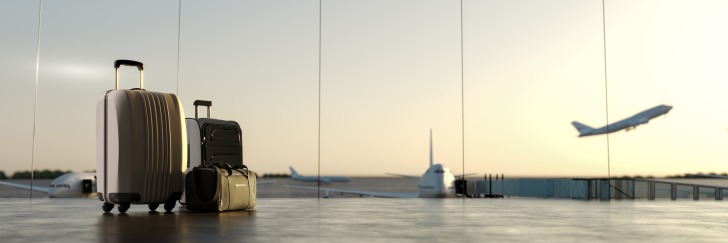There are over 44,000 airports worldwide.
These mini-cities are also crucial to an area’s growth.
Airports contribute to economic development, providing millions of jobs and trillions of dollars in annual trade and revenue.
Today’s modern airports are more than a place to board a plane.
They have become extraordinary destinations.
Of course, their primary purpose is to facilitate global transportation – moving passengers and various goods essential to the health and growth of cities and countries.
However, some of today’s largest airports also have amusement parks, museums, shopping centers, hotels, and restaurants.
Contents
Here are the largest airports on the planet by total square kilometers.
| AirportName | Country | Square Kilometres |
|---|---|---|
| King Fahd International Airport | Saudi Arabia | 776 |
| King Khalid International Airport | Saudi Arabia | 375 |
| Denver International Airport | United States | 135 |
| Kuala Lumpur International Airport | Malaysia | 100 |
| Istanbul Airport | Turkey | 76 |
| Dallas/Fort Worth International Airport | United States | 69 |
| Southwest Florida International Airport | United States | 54 |
| Orlando International Airport | United States | 53 |
| Washington Dulles International Airport | United States | 48 |
| Beijing Daxing International Airport | China | 46 |
| George Bush Intercontinental Airport | United States | 44 |
| Kansas City International Airport | United States | 43 |
| Pittsburgh International Airport | United States | 40 |
| Shanghai Pudong International Airport | China | 39 |
| Cairo International Airport | Egypt | 36 |
| Dubai International Airport | United Arab Emirates | 35 |
| Suvarnabhumi Airport | Thailand | 32 |
| Paris Charles de Gaulle Airport | France | 32 |
| Salt Lake City International Airport | United States | 31 |
| Chicago O'Hare International Airport | United States | 30 |
| Adolfo Suarez, Madrid-Barajas Airport | Spain | 30 |
| YEG Edmonton International Airport | Canada | 28 |
| Amsterdam Airport Schiphol | Netherlands | 27 |
| Brisbane International Airport | Australia | 27 |
| Frankfurt Airport | Germany | 23 |
| Rajiv Gandhi International Airport | India | 22 |
Saudi Arabia‘s King Fahd International Airport is the world’s crown jewel of airports.
It covers an astounding 776 square kilometers.
Second on the list is the country’s King Khalid International Airport, which has over 375 square kilometers of aerospace and retail areas.
Denver International Airport in central Colorado is the United States‘ largest airport by land area, covering 135 square kilometers.
While Malaysia‘s Istanbul Airport, west of the city, is Turkey‘s closest airport to the Black Sea and Bulgaria.
It covers roughly 76 square kilometers of the Arnavutköy district.
The major airport hubs of Dallas–Fort Worth (DFW) International Airport, Southwest Florida International Airport, and Orlando International Airport, all within the continental United States, are sized at 69, 54, and 53 square kilometers, respectively.
The next largest airports, measured by land mass, are also in the United States.
Washington Dulles International Airport, which serves Washington D.C. and all points south of the nation’s capital, sits on 48 km2.
George Bush Intercontinental Airport, north of Houston, Texas, on the Gulf Coast, occupies 44 sq. km.
Immediately behind on the list is the Kansas City International Airport, ringing in at 43 square kilometers.
Southwestern Pennsylvania‘s Pittsburgh International Airport serves as both a civilian and a military airport.
Bounded by Loop IH-376, it covers approximately 40 square kilometers.
China‘s largest airport, Beijing Daxing International Airport, extends roughly 46 square kilometers.
The Shanghai Pudong International Airport, located on the far southeastern tip of mainland China, is a notable 39 km2.
Various airports around the world average a respectable 30-40 square kilometers.
Comparatively modest in size but still a good workout for passengers, it includes Egypt‘s Cairo International Airport at 36 sq. km. and the UAE’s 35 square kilometers of Dubai International Airport.
Thailand‘s Suvarnabhumi Airport, often referred to as Bangkok International Airport, is an artistic space that has two runways across 32 km2.
Paris‘ Charles de Gaulle Airport is a European gateway.
Its 32 square kilometers serve an estimated 57.5 million travelers annually.
Salt Lake City International Airport, in central Utah, covers roughly 31 km2.
Chicago O’Hare International Airport and Adolfo Suarez, Madrid-Barajas Airport in Spain are tied, measuring 30 square kilometers each.
Canada‘s YEG Edmonton International Airport is the country’s fifth busiest and largest airport.
It sits on 28 km2 at an elevation of 2372′ above sea level.
Amsterdam Airport Schiphol covers 27 square kilometers and is located just southwest of Amsterdam near Haarlemmermeer.
Another 27-square-kilometer airport is Brisbane International Airport, on Australia‘s east-central coast, serving South Queensland.
Over 23 million passengers pass through annually.
Frankfurt Airport is the country’s largest international airport for both passengers and goods.
The airport, located just south of the city, covers a notable 23 km2 in south-central Germany and is served by two train stations and local shuttles.
The 26th largest airport on the list is India‘s Rajiv Gandhi International Airport, which is a modest 22 square kilometers.
This civilian aerospace serves the population of nearby Hyderabad, Telangana.
Frequently Asked Questions
Which country has the most airports worldwide?
The United States of America is the world leader with the highest number of airports.
There are, at last count, 13,513 officially sanctioned airports, airstrips, and air stations.
What is the smallest country without an airport?
There are several countries without airports.
However, Vatican City has the smallest independent sovereignty, 0.44 km2, without an airport.
Instead, the Holy See has a special heliport for Vatican personnel and visiting dignitaries.
What are the Three Letter Airport Codes?
The three-letter location identifier codes are assigned by the International Air Transport Association (IATA).
They are used in aviation to identify an airport and in shipping to confirm a location.












I wonder which one is the busiest?